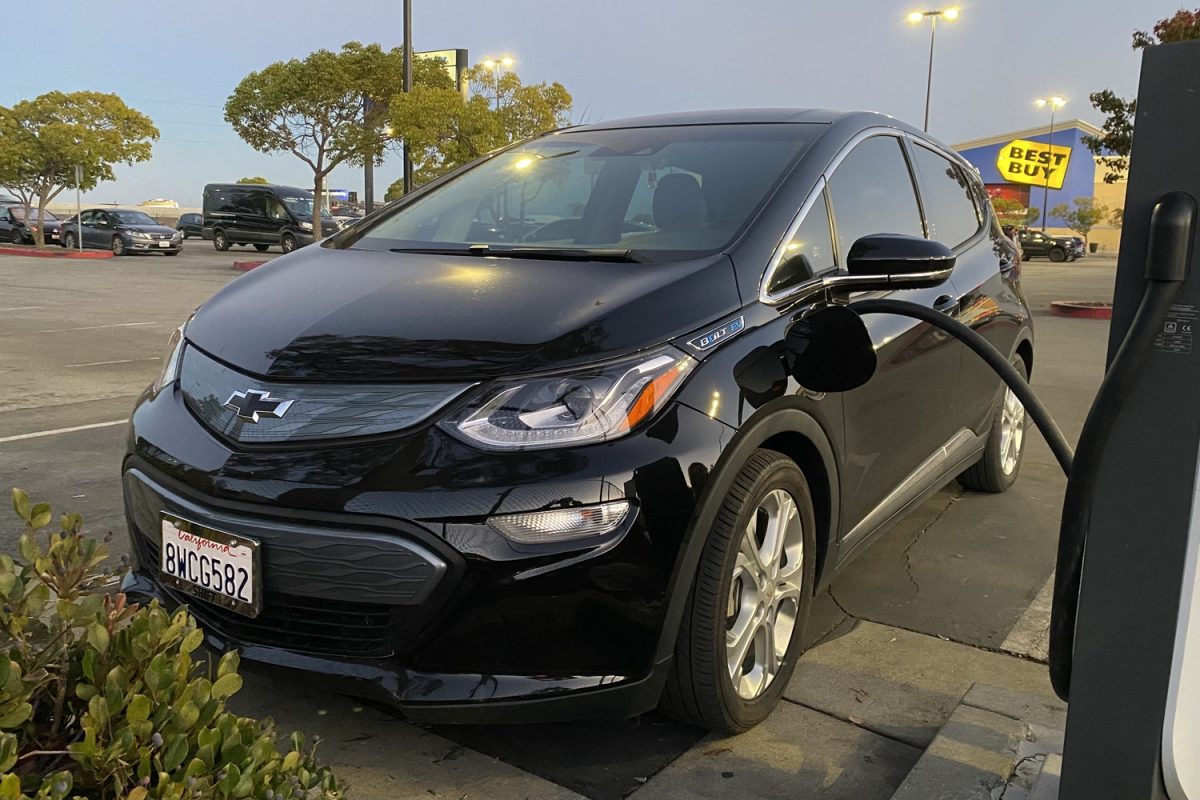California Executive Order N-79-20, signed by Gov. Gavin Newsom in 2020, mandated that all new cars and trucks sold in California should be zero-emission vehicles. The regulation has raised concerns about whether California’s electrical grid will be able to meet the timeline of the regulation and if it will be able to handle the increased amount of electric vehicles filling the roads.
California passed Senate Bill (SB) 100 in 2018 in addition to Executive Order N-79-20; both have been created as efforts to fight the climate crisis. The regulations both focus on increasing electric vehicle use and decreasing gas-powered vehicle emissions as a step forward in California’s combatting climate change.
Climate change emissions across the United States need to decrease to achieve climate and air quality goals. California decided that one of the steps to confront the problem is to look into state transportation emissions.
Transportation is among the biggest sources of carbon emissions in California and the United States. If California mandates only zero-emission vehicle sales, there would be less smog in big cities, better road air quality, and a decrease in the state’s overall carbon emissions.
“We’re doing a study to see what vehicles should be replaced with electric vehicles and when. So we have a timeline from now until 2035, which shows how many vehicles need to be replaced by specific benchmark dates,” said Zoe Van Duivenbode, the leader of the Electric Vehicle Effort in San Mateo County’s sustainability Office.
The plan to increase electric car sales has raised concerns among residents about whether California’s power grid can handle the new mandate.
The California Public Utilities Commission estimated that California would need about 1.2 million public and shared vehicle chargers to achieve the goals of the mandate. Right now, the state has around 93,000 vehicle chargers. The inevitable increase in demand for charging stations is causing concerns among residents.
“I don’t own an electric car right now, but I suppose I will own one eventually if I continue living in California. I guess my main concern is where I would charge my car if I went on road trips,” said Claire Moore, a California resident and electric car owner.
To put into perspective how much electricity new zero-emission vehicles use, lightweight electric vehicles are proposed to take 14.6% of the electricity demand in the US. In contrast, in 2022, they took about 0.6% of it.
To have a big enough grid to compensate for the new electricity consumption, there needs to be a significant increase in infrastructure built across California.
Pacific Gas and Electric (PG&E), the company that controls most of California’s electric grid, will need to increase infrastructure significantly to reach these goals. Currently, PG&E is spending $2.5 billion to work toward California’s SB 100 goal.
With plans of having no new gas car sales by the year 2035, there is potential to have problems with the electric grid in California, such as long queues and charging time for electric vehicles.
With the rising concerns around SB 100, plans are being implemented to avoid a strained electric grid in California.
California plans to spend $7.3 billion on 45 new power transmission projects by 2030 to help construct solar energy, wind, and numerous battery storage projects.
“We’re looking at different facilities and figuring out how many EV chargers are needed there and when we need to install them,” Duivenbode said. “That’s the larger piece of the puzzle is figuring out the infrastructure and the cost.”
When the regulations first roll out, there may be problems with having a strained electric grid, but as there are increasing efforts put into ensuring California has an electric grid that supports all of the electric vehicles, California’s electricity should run smoothly.
“I would say one of the biggest things that we’re working on right now is working to transition our vehicles to zero emission alternatives,” Duivenbode said.












